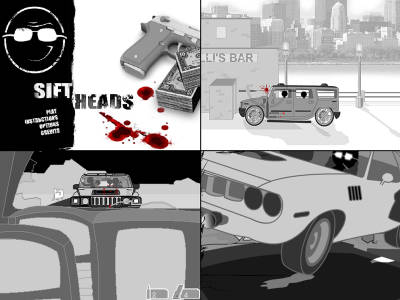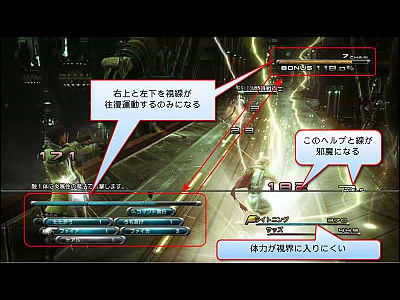Deck build type strategy simulation 'Fights in Tight Spaces' play review that knocks down enemies that spring up one after another with grasshoppers

'Fights in Tight Spaces ' is
Steam: Fights in Tight Spaces
https://store.steampowered.com/app/1265820/Fights_in_Tight_Spaces/
Fights in Tight Spaces is a story in which the main character directly confronts biker gangs and gang groups in prisons, which require thousands of members as 'agents' of spy organizations, and solves problems.

The main character is a spy in a suit reminiscent of James Bond, but as the title 'Fights in Tight Spaces' shows, there are no elements such as stealth, and the battle is the main thing. .. The game screen looks like this, the upper side is the field where the main character and enemy characters fight, and the lower side is the hand.

The HP and attack power of each enemy character are displayed overhead, and when clicked, the attack to be executed in the next turn is displayed on the right side.

The attack range is displayed at the feet of the enemy character. In the screen below, the upper 'pistol thug' is about to 'shoot' a straight line attack, so a red circle appears linearly from the feet of the pistol thug.
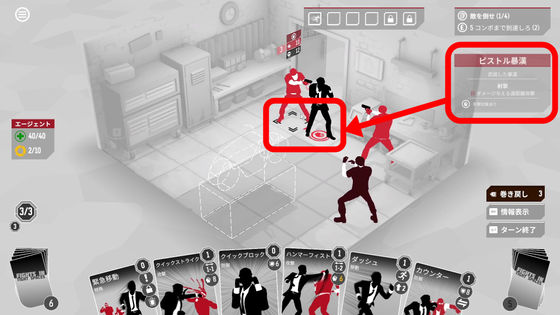
The current situation is that the main character is sandwiched between two pistol thugs from the front and back. So move using the 'dash' that can move 1 to 2 squares from your hand.

When the turn ends in this state, the lower pistol thug executes 'shooting'.
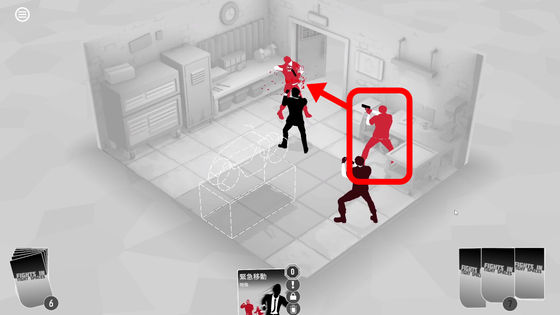
The upper pistol thug has been attacked by an ally. In this way, Fights in Tight Spaces is a game in which the enemy's planned attacks are displayed in advance, so you can deal with them by attacking or moving before they are put into action on the enemy's turn.

The action that the hero can take can be selected with the card at the bottom of the screen.

Each card has icons that show the effect in the upper right corner, but the most important one is the cost. Cards that can be used each turn have a limit on the total cost, and the default limit is 3. Unused cards move to the trash at the end of the turn.

For effects other than cost, you can read the explanation column that is displayed when you move the cursor. For example, 'slip' has the effect of 'moving to the square next to the adjacent enemy or moving to 1 square' ...
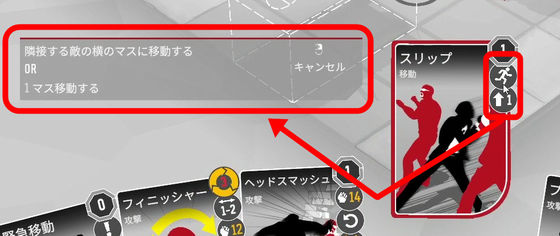
The range that can actually be moved is displayed as a black circle on the field. In the following scenes, the upper left character is the main character, so the upper left, lower left, lower right 1 square or the side of the character in the middle can be moved.
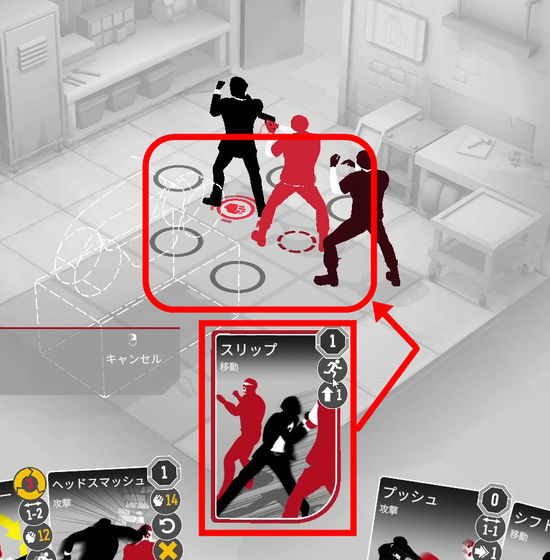
Cards are divided into three types: attack, movement, and defense. If it is an attack, it not only damages but also pushes out one square of the target, such as 'front kick' ...
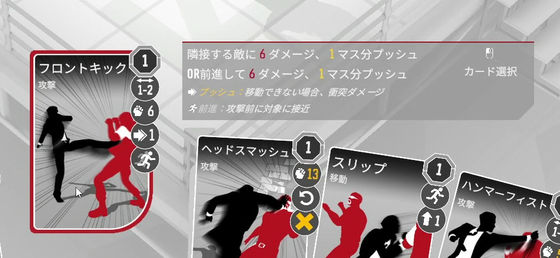
'Scratch' that deals powerful continuous damage only if not blocked
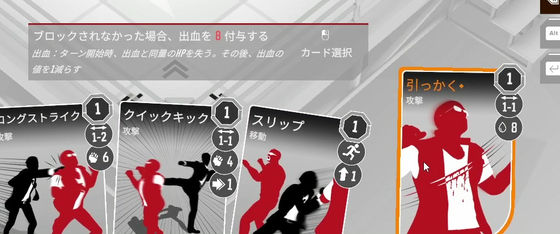
A 'finisher' that consumes a resource called a 'combo' that accumulates by attacking and causes great damage.
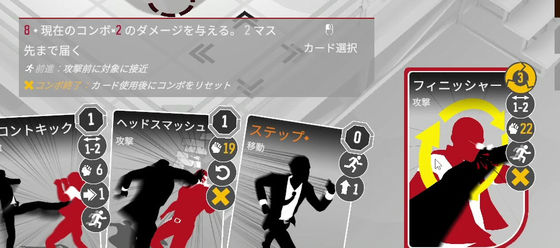
In addition to basic things such as 'steps' that move one square in any direction ...
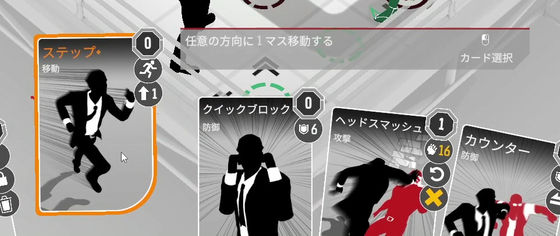
There are also special movement cards such as 'Shift' that can be turned to the back of adjacent enemies.
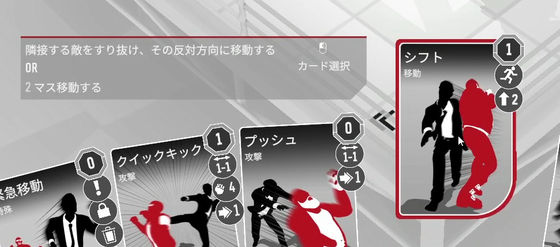
Basically, it is a prerequisite to avoid enemy attacks by moving, but there are few defense cards, but there are 'counters' that counterattack the opponent who attacked after preventing damage.

You will fight the enemy by making full use of the above cards, but since the enemy will boil every few turns in this game, it may not be possible to process it in time if you do some damage while avoiding the enemy's attack.
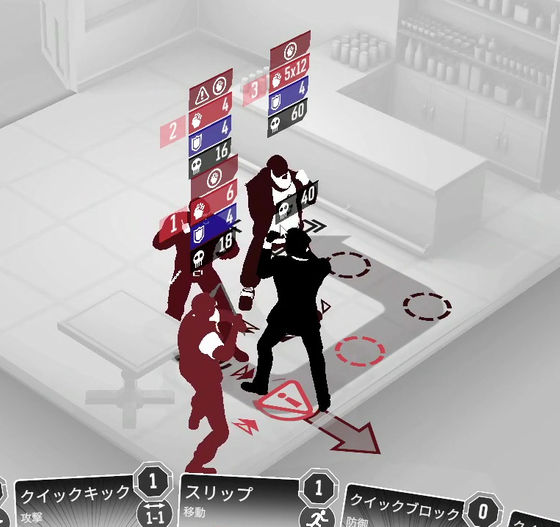
In such a case, 'pushing down' is important. If you push an enemy toward the 'edge of the field that you can overcome', such as open doors, railings, and ring ropes that exist on the field, you will be treated as an instant death attack. For example, in the following scene, if you hit the 'front kick' that has the effect of 1 mass push toward the enemy near the ring rope ...
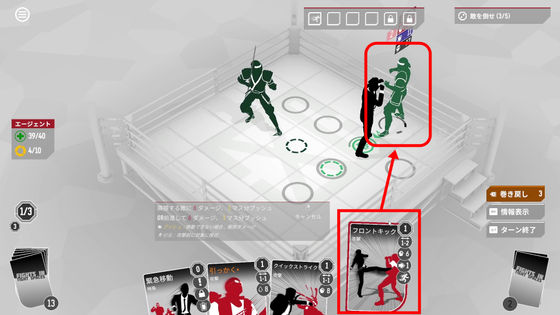
The enemy blows off over the ring rope ...

death. Push-down can be killed regardless of the target's HP / defense.
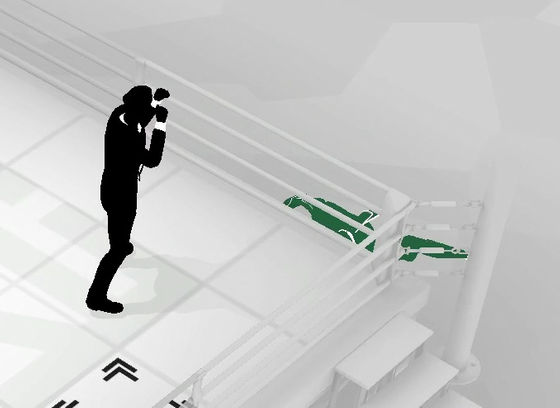
In that case, it makes me want to think, 'Isn't it okay to kill everything by pushing it down?', But how many edges can be pushed down depends on the map, and 'movement of the enemy' is also a problem. Basically, the enemy moves to a position where he can attack the main character on the next turn after the attack ends, so he rarely stays near the wall. So, if you want to push the enemy down, first turn end at a position where the enemy can easily push it down, and if the enemy successfully comes to that position, move to a position where you can also push it down. You have to have a card that can be 'pushed' after setting up this much.
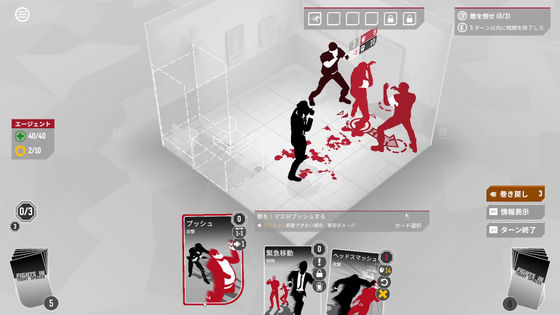
Furthermore, the ability of the enemy is also important. Not only small fish enemies that attack one square in front of you, but also enemies that attack at a long distance with a pistol, enemies that launch push attacks, enemies that counterattack, range attacks, and defense every turn Enemy characters have various abilities, such as enemies who perform, enemies who fight back when standing in front of them, and enemies who cannot take a side with the special ability of 'always facing the main character'.
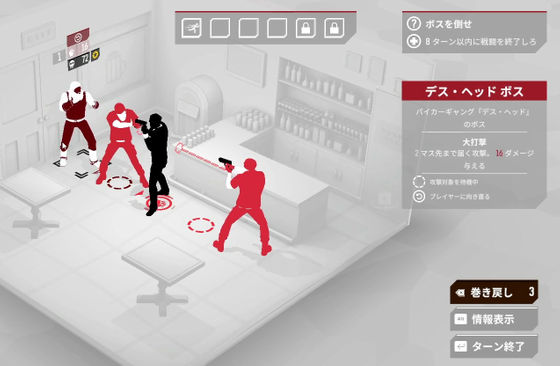
Most of the time, you're dealing with multiple enemies at the same time, so things like 'Oh, I forgot the special abilities of this enemy ...' or 'I should have used this card first'. Tends to happen. In that case, you can redo the turn up to 3 times per battle with the 'Rewind' button.
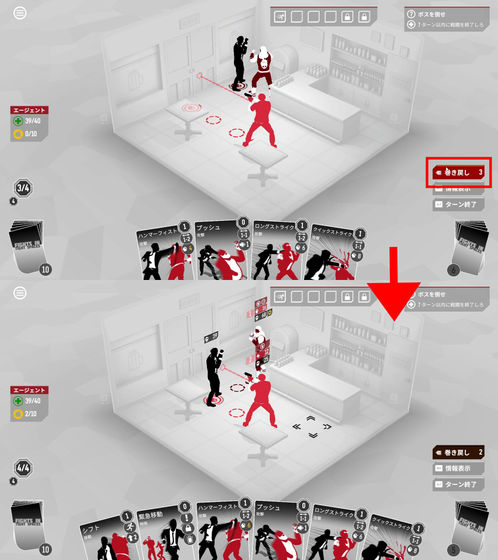
The battle ends when all the enemies are defeated. After the end, you can get one of the randomly presented cards as a reward.
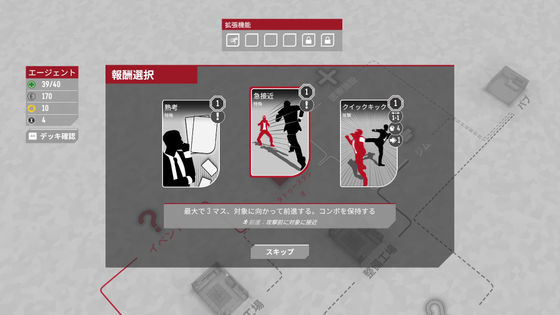
The stage is a format in which you decide your own destination from multiple routes.
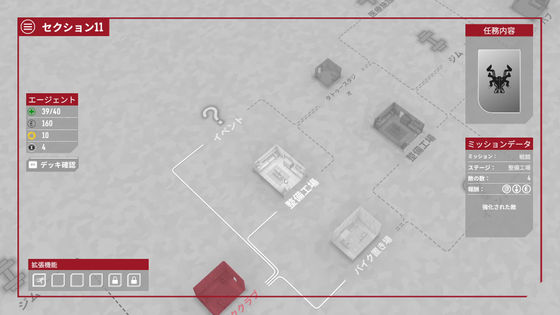
There are battle-only stages as mentioned above, stages where random events occur, and so on ...
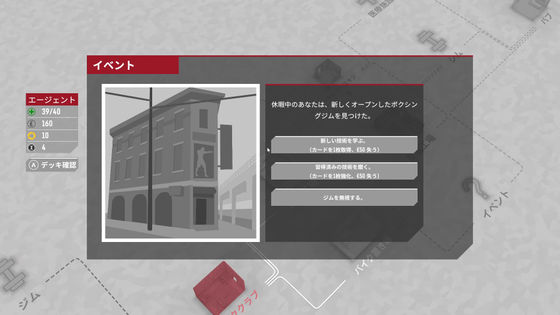
There is also a stage where you can purchase, strengthen, and delete cards using the money you can get along the way.

When I actually play it, the enemies come out one after another, so basically it is a situation where there are many people out of control, but since the main character can move after seeing the enemy's attack schedule, 'enemy's attack is 'Move to a position that does not hit' is possible. If you do so, you can attack unilaterally, but since the chances of recovering HP are limited, you will always be required to read through the enemy's attack and minimize the impact.
Roguelike x card battle x strategy simulation 'Fights in Tight Spaces' is a play screen like this --YouTube
However, since you need a corresponding hand regardless of whether you move or attack, it may happen that you can avoid all attacks and push down the enemy with just one card that moves one square! Tend to be. Such a place like 'the mystery of random elements' inherits the goodness of card battle games, and has nothing to do with the rut that 'it is strong just by repeating the same action every turn'. And the pleasure of pushing out the enemies with full strength by deciding the chain of cards brilliantly was the impression that it inherited the goodness of simulation games such as Tactics Ogre and Fire Emblem.
'Fights in Tight Spaces' can be purchased on Steam for 2570 yen including tax and is available in Japanese.
Steam: Fights in Tight Spaces
https://store.steampowered.com/app/1265820/Fights_in_Tight_Spaces/
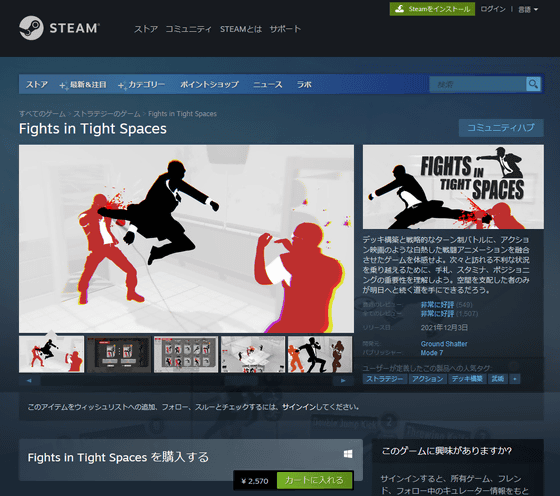
Related Posts:





